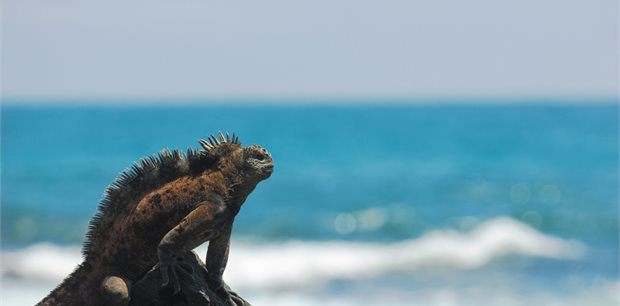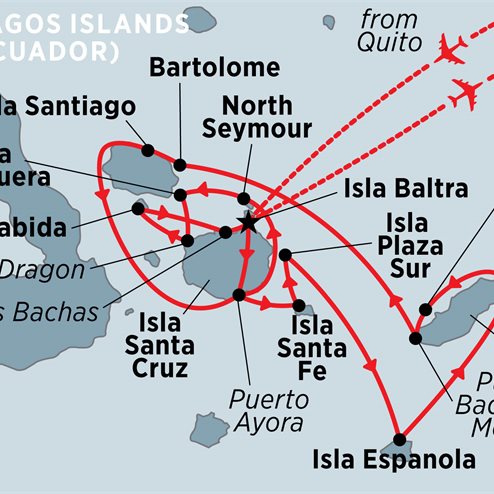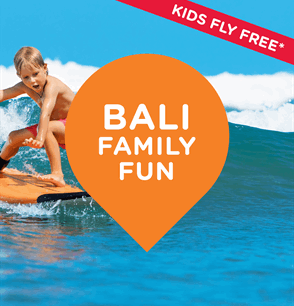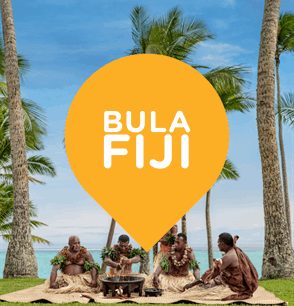

Cruise onboard the Grand Queen Beatriz to a superb spread of Ecuador’s wildlife-filled island. As well as visiting the must-see attractions of the archipelago – San Cristobal’s frigatebirds, Santa Cruz’s giant tortoises and Bartolome’s Pinnacle Rock – this 13-day itinerary covers some lesser-visited sites, including the trails of North Seymour and scarlet shores of Rabida. With volcanic landscapes, sea turtles, marine iguanas and seabirds on the agenda and a dedicated crew and naturalist guide ready to attend to all of your needs, this Galapagos experience truly is a special way to experience nature at its finest. Embark on an extraordinary adventure for animal lovers, snorkellers and photographers deep in the Galapagos.
Themes
Adventure Cruising
Wildlife
-
Highlights
- By exploring the Galapagos Islands on a fully equipped motor yacht, you will not only see the island’s hotspots but get to the quieter coves and secluded beaches, discovering true wilderness.
- Discover the wonder of the Galapagos Islands onboard the M/Y Grand Queen Beatriz, together with a local naturalist guide and a dedicated crew attending to all of your needs.
- Go landside in the Galapagos in search of endemic flora, opuntia and cacti forests, bizarre volcanic rock formations and nature trails leading to some stunning viewpoints and lagoons.
- Have multiple opportunities to snorkel in the Galapagos’ marine life-rich waters, swimming beside playful sea lions and spotting any number of colourful fish and shark species.
- With one nights’ accommodation either side of your Galapagos experience included in the highland haven of Quito, why don’t you consider extending your stay to see more of Ecuador?
-
What's Included
Meals
13 Breakfasts, 10 Lunches, 10 Dinners
Transport
Minibus , Boat , Plane , Zodiac
Accommodation
Hotel (2 nights), Overnight boat (12 nights)
Included Activities
- Isla Bartolome - Panga ride (30 mins)
- Isla Bartolome - Snorkelling (1.5 hours)
- Isla Bartolome - Walk (1.5 hours) - Dry Landing
- Isla Espanola - Bahia Gardener - Snorkel (1 hour)
- Isla Espanola - Bahia Gardener - Walk (1.5 hours) - Wet Landing
- Isla Espanola - Punta Suarez - Walk (3 hours) - Dry Landing
- Isla Mosquera - Beach Walk (1.5 hours) - Wet Landing
- Isla Mosquera - Snorkelling (1 hour)
- Isla North Seymour - Snorkelling (1 hours)
- Isla North Seymour - Walk (2 hours) - Dry Landing
- Isla Plaza Sur - Walk (2 hours) - Dry Landing
- Isla Rabida - Snorkelling (1 hour)
- Isla Rabida - Walk (1.5 hours) - Wet Landing
- Isla San Cristobal - Highlands Walk (1.5 hours) - Dry Landing
- Isla San Cristobal - Isla Lobos - Walk (1 hour) - Dry Landing
- Isla San Cristobal - Kicker Rock - Snorkelling (45 minutes)
- Isla San Cristobal - Punta Pitt - Walk (2 hours) - Wet Landing
- Isla Sanitago - Espumilla Beach - Snorkelling (45 mins)
- Isla Sanitago - Espumilla Beach - Walk (1.5 hours) - Wet Landing
- Isla Santa Cruz - Bachas Beach Walk (1 hour) - Wet Landing
- Isla Santa Cruz - Black Turtle Cove - Panga ride (1.5 hours)
- Isla Santa Cruz - Cerro Dragon - Snorkelling or swimming (1 hour)
- Isla Santa Cruz - Cerro Dragon - Walk (1.5 hours) - Dry Landing
- Isla Santa Cruz - Charles Darwin Research Station (1.5 hours) - Dry Landing
- Isla Santa Cruz - Charles Darwin Research Station (1.5 hours) - Dry Landing
- Isla Santa Fe - Panga ride (45 mins)
- Isla Santa Fe - Walk (1.5 hours) - Wet Landing
- Isla Santiago - Puerto Egas - Snorkelling (1 hour)
- Isla Santiago - Puerto Egas - Walk (1.45 hours) - Wet Landing
- Isla Santiago - Sombrero Chino - Snorkelling (1 hour)
- Isla Santiago - Sullivan Bay - Walk (1.5 hours) - Dry Landing
- Sombrero Chino - Walk and Panga ride (2 hours) - Wet Landing
-
Pricing
-
- Start Date
- End Date
- Price
- Availability
Please note: while prices are accurate at time of loading they are subject to change due to currency fluctuations and currency surcharges may apply. Please check price at time of booking -
-
Itinerary
Day - 1
Location: Quito - Welcome to Quito! On arrival at Mariscal Sucre International Airport, you will be met and transferred to your hotel. As today is an arrival day, there are no activities planned until an important meeting in the early evening (5 or 6 pm) to meet your group leader and fellow travellers joining you for this adventure. Until then, why not discover more of Quito. The Old Town is awash with history, with more than 30 churches to explore – the La Compania de Jesus is considered to be the one of South America’s most beautiful – and the city's oldest street, Calle La Ronda, is well worth exploring.
Day - 2
Location: Isla Baltra – Charles Darwin Research Station - Very early this morning, take an included 1-hour transfer to the airport for your flight to the Galapagos Islands. Your flight will stop via Guayaquil to pick up other passengers (total flight time approximately 3.5 hours). On arrival in the Galapagos, you will be met in the airport arrivals hall by a transfer guide and will take a public airport bus (approximately 5 minutes), a public ferry across the Itabaca Channel (approximately 7 minutes) and a private bus (approximately 45 minutes) to Puerto Ayora, where your cruising vessel – the M/Y Grand Queen Beatriz – is anchored. Transfer to the boat via dinghy, and once on board, settle into your cabin and go through a safety briefing. You’ll then get to know your Galapagos crew and naturalist guide over lunch. This afternoon, visit the Charles Darwin Research Station to learn about their conservation efforts and have the chance to encounter the Galapagos giant tortoise. You will also see baby tortoises and land iguanas.
Day - 3
Location: Isla Santa Fe – Isla Plaza Sur - This morning, explore the natural wonder of Isla Santa Fe. This island is home to Galapagos hawks, land iguanas, a variety of finches, Galapagos mockingbirds, sea lions, marine turtles, frigatebirds, Galapagos doves and lava lizards. You may choose to take a walk through Santa Fe’s opuntia forest – some of the largest trees in the Galapagos – or snorkel in the jade-green waters, perhaps with one of the island’s many sea lions joining you for a swim. Otherwise, a hike towards the cliffs on Santa Fe will lead you to a forest of prickly pear cactus. Afterwards, sail on to Isla Plaza Sur – an island characterised by its volcanic and cacti landscapes, coloured bright red and green with sesuvium ground cover. Plaza Sur has a large land iguana population, as well as rugged southern cliffs ideal for spotting tropicbirds and swallow-tailed gulls. Sea lions also like to laze on the island’s shores, so keep your camera handy.
Day - 4
Location: Isla Espanola – Bahia Gardner – Punta Suarez - After an overnight sail, wake up by Isla Espanola – the southernmost island of the Galapagos. Because of its remote location, this island has a large population of endemic wildlife. It is the breeding site for nearly all of the world's 12,000 pairs of waved albatrosses and also home to colonies of blue-footed and masked boobies, Galapagos doves and mockingbirds. Sea lions and marine iguanas are also spotted on its golden shores. Spend some time at Bahia Gardner for a swim and snorkel, discovering Galapagos’ underwater world of reef sharks, turtles and many species of tropical fish. Also today, take a walk to a clifftop viewpoint near Punta Suarez for panoramic views over the island – this is also a great spot to watch birds taking flight.
Day - 5
Location: Isla San Cristobal – Leon Dormido – Isla Lobos – Punta Pitt - This morning you will visit Punta Pitt on the eastern end of Isla San Cristobal. Walk to the top of the volcanic hill for expansive views of the sparsely vegetated area. A variety of seabirds nest here, including blue-footed boobies and frigates. On a Zodiac ride you can observe the three varieties of boobies nesting in the Galapagos and enjoy a snorkel from the beach. Pass through Leon Dormido (Kicker Rock) – the basalt remains of a crater in the middle of the sea, the shape resembles a sleeping lion. The rock rises 150 metres above the surface and is divided into two parts by a narrow channel, with nesting seabirds on either side of the boat, and marine iguanas and sea lions in and out of the water. Snorkelling gives us the opportunity to see Galapagos sharks, and possibly a hammerhead shark among sea turtles and an incredible biodiversity of invertebrates on the rock wall. Today, you’ll also visit Isla Lobos – a tiny island almost touching San Cristobal. Sea lions as they play in the calm shallow waters here, and blue-footed boobies, frigate birds and marine iguanas are also easily seen.
Day - 6
Location: Isla San Cristobal – Interpretation Center and Highlands - Take it easy this morning, with some possibility to continue searching these islands for more unique wildlife and remote wilderness. In the afternoon, travel into the interior of Isla San Cristobal to visit the highlands site of ‘Galapaguera of Cerro Colorado’ (Red Hill) where the national park has established a breeding program and information centre for tortoises. Here, we will be able to see giant tortoises in their natural habitat and learn all about their origin, evolution and their threatened future.
Day - 7
Location: Bartolome – Bahia Sullivan - Bartolome is one of the most spectacular volcanic landscapes in the Galapagos, full of parasitic spatter cones, lava flows, Galapagos penguins and lava lizards. It is a relatively new island in the archipelago and traces of its volcanic past can be seen everywhere, as evidenced by the amazing lunar-like landscape. Pinnacle Rock is one of the most photographed sites in the Galapagos – an abrupt jag of rock protruding from the earth like a tooth, while nearby two golden bays back onto each other. You can hike to the top of a once-active volcano here (360 wooden steps) and enjoy superb views across to Sullivan Bay on nearby Isla Santiago. If you are in luck, you might catch a glance of the Galapagos hawk here. Today, you also have the opportunity to go snorkelling with plenty of tropical fish, starfish, white-tipped reef sharks, rays and penguins. On Santiago's eastern coast sits Bahia Sullivan where you can walk on Pahoe-Hoe lava. Hopefully, catch sight of some marine iguanas, Sally Lightfoot crabs, sea lions, finches, turtles, sharks and penguins.
Day - 8
Location: Isla Santiago – Espumilla Beach – Buccaneer Cove – Puerto Egas - On the northern coast of Isla Santiago in James Bay, Espumilla Beach is one of the most idyllic locations in the Galapagos Islands and is an important nesting site for marine turtles. With large waves, it’s often a favourite among beach lovers. It is also well known for its palo santo forest and some extraordinary lava formations. Today, you will also visit Caleta Bucanero (Buccaneer Cove) – a natural monument of rocks caused by sea erosion. This cove was used by pirates to careen their ships and was also where Darwin camped for nine days while making his study of the islands and their wildlife. Continue on to Puerto Egas – a black sand beach located on the west side of James Bay and northwest of Isla Santiago. South of the beach is Sugarloaf Volcano, which has deposits of volcanic tuff. The walk along the beach offers hundreds of marine iguanas and Galapagos sea lions. You will also see amazing tidal pools formed from ancient lava flow and home to sponges, snails, hermit crabs, barnacles and fish.
Day - 9
Location: Isla Santa Cruz – Charles Darwin Station – Santa Cruz Highlands - Sail overnight to Puerto Ayora on Isla Santa Cruz – the second largest island in the Galapagos. This small town is the economic centre of the archipelago, and home to the Charles Darwin Research Station. As well as undertaking vital conservation work, the station also makes for interesting exploration and offers the best opportunities for close encounters with giant tortoises. There may be time to revisit the tortoises today as you explore. Afterwards, head up to the highlands for a total change of scenery. Beginning at the coast you'll travel across Santa Cruz through the agricultural region and into the misty forests with the journey taking about 45 minutes. This is a lush humid zone containing miconia bushes, scalesia and inactive volcanic cones. On your walk, you are likely to see Galapagos giant tortoises in their natural habitat, and perhaps the bright red feathers of a vermillion flycatcher.
Day - 10
Location: North Seymour – Isla Mosquera - This morning, take a land excursion on North Seymour, crossing inland and exploring the rocky coast. Along the way the trail passes colonies of blue footed boobies and frigatebirds. This large black bird with a long wingspan and hooked beak is extremely fast and has excellent vision. During mating season, males throw back their heads, inflate their neck pouch and shake, trying to capture the attention of female frigates. Sharing the same nesting area, blue-footed boobies make their ground nests from the twigs of the palo santos trees, while frigatebirds nest just above them in the saltbushes. Your walk is followed by some snorkelling, where you’ll find a great variety of fish and possibly white-tipped reef sharks, rays and sea lions. After lunch, visit the small sandy island of Mosquera – a relaxing, picturesque stop situated between Baltra and North Seymour. Along the rocks and in the tide pool, Sally Lightfoot crabs scamper back and forth, skipping across small pools of water in search of food. The island also has a very large colony of sea lions as well as a sizeable resident brown pelican population. Depending on the tides and visibility, you may have a chance to go snorkelling here too.
Day - 11
Location: Black Turtle Cove – Cerro Dragon - Today you will take a morning Zodiac excursion to Caleta Tortuga Negra (Black Turtle Cove) – a red mangrove wetland on the north shore of Isla Santa Cruz. Paddle among the cove’s peaceful waters for your first taste of the underwater riches of this region – it’s a wonderful place to see the green turtle and is a nursery for golden cow-nose rays, eagle rays and Galapagos sharks. There is abundant birdlife, such as the yellow warbler and lava heron, and it’s also a breeding area for turtles. In the afternoon, cruise over for a walk on Cerro Dragon (Dragon Hill) – one of the best places to see land iguanas in the islands. Walk to a brackish lagoon teeming with stilts, pintail ducks, sandpipers, sanderlings and occasionally flamingos. Further inland, the trail offers a beautiful view of the bay and the western area of the archipelago. This area is a nesting site for land iguanas, which is constantly monitored and assisted by the Charles Darwin Research Station. The arid-zone vegetation makes for a rewarding location for birdwatching with Darwin's finches, Galapagos mockingbirds, the endemic Galapagos flycatcher and yellow warblers all regulars here. The path may be challenging but you will be rewarded with a spectacular view of the bay!
Day - 12
Location: Isla Rabida – Sombrero Chino - Spend the day exploring Isla Rabida and the geologically fascinating Sombrero Chino. Literally meaning ‘Chinese hat’, this islet is located near the south-east coast of Isla Santiago, with many lava tubes leading from the cone to the coast. Keep an eye out for sea lions, Sally Lightfoot crabs and possibly a Galapagos penguin! Follow a trail that circles the cove and passes through a sea lion colony and past a number of marine iguanas. There may be the opportunity for some snorkelling here, before heading off to Isla Rabida – an island eradicated of introduced species and reinstated to a state of splendid isolation. Admire the red sand beaches and cliffs, perhaps trekking on one of the trails to a lagoon filled with grazing flamingos. Rabida is also a wonderful place to spot nesting pelicans, pintail ducks, marine iguanas and sea lions. If you have time, enjoy an afternoon of snorkelling, spotting sea stars, damsels, gobies and surgeon fish.
Day - 13
Location: Las Bachas – Isla Baltra – Quito - Embrace an early start this morning to fit in a final excursion before a mid-morning flight back to Quito. Head to the sandy white beaches of Las Bachas on the north shore of Isla Santa Cruz, perhaps for a snorkel or a walk to its beachside saltwater lagoon full of flamingos and whimbrels. Return to the airport at Baltra and board your flight bound for Quito (via Guayaquil). On arrival at Quito Airport (approximately 4 pm), take an included transfer back to your hotel for the night.
Day - 14
Location: Quito - Your Galapagos adventure will come to an end today after breakfast. There are no activities planned for the final day, so you are able to depart the accommodation at any time.













